View in other NatureServe Network Field Guides
NatureServe
Montana
Utah
Wyoming
Idaho
Wisconsin
British Columbia
South Carolina
Yukon
California
New York
Warren's Small Minnow Mayfly - Camelobaetidius warreni
General Description
Larvae of Camelobaetidius are differentiated from those of all other Baetids by the presence of spatulate tarsal claws.
Diagnostic Characteristics
Larvae of Camelobaetidius are differentiated from those of all other Baetids by the presence of spatulate tarsal claws.
Species Range
Montana Range
Range Descriptions
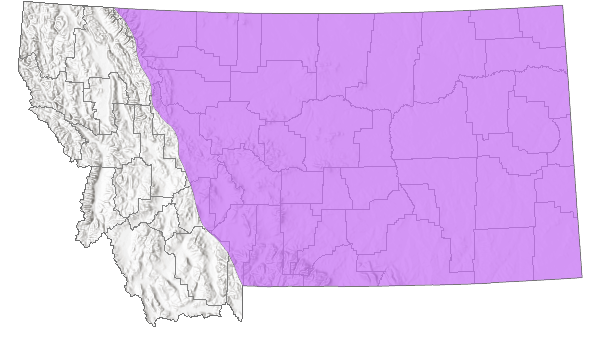
 Native
Native
Range Comments
Camelobaetidius warreni is the most widespread species of Camelobaetidius in North America and occurs in most western states. In Canada, it is known only from Saskatchewan although it likely also occurs in Alberta (Webb 2002). Camelobaetidius are primarily found in warm, silty rivers in the southwestern United States, Mexico, and Central and South America. C. warreni is the only species found this far North.
Observations in Montana Natural Heritage Program Database
Number of Observations: 47
(Click on the following maps and charts to see full sized version)
Map Help and Descriptions
Relative Density
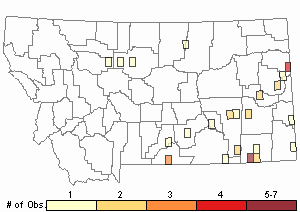
Recency
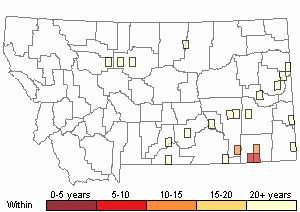

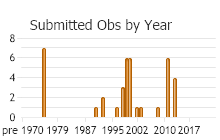
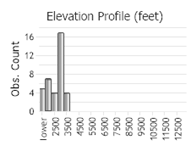 (Observations spanning multiple months or years are excluded from time charts)
(Observations spanning multiple months or years are excluded from time charts)
Migration
The adult stage fo this mayfly flies upstream to lay eggs, but generally does not fly overland to seek out new places.
Habitat
Camelobaetidius are primarily found in warm, silty rivers in the central & southwestern United States, Mexico, and Central and South America. Larvae in a Canadian study were found near the shore over a silty gravel and rubble substrate in moderate current.
Stewardship Responsibility
Threats or Limiting Factors
Threats to this species include dams and diversions and excessive siltation that smothers their sandy bottom habitats
References
- Additional ReferencesLegend:
 View Online Publication
View Online Publication
Do you know of a citation we're missing? Peterson, D.A., Clark, M.L., Foster, Katharine, Wright, P.R., and Boughton, G.K., 2010, Assessment of ecological conditions and potential effects of water produced from coalbed natural gas development on biological communities in streams of the Powder River structural basin, Wyoming and Montana, 2005–08: U.S. Geological Survey Scientific Investigations Report 2010–5124, 84 p.
Peterson, D.A., Clark, M.L., Foster, Katharine, Wright, P.R., and Boughton, G.K., 2010, Assessment of ecological conditions and potential effects of water produced from coalbed natural gas development on biological communities in streams of the Powder River structural basin, Wyoming and Montana, 2005–08: U.S. Geological Survey Scientific Investigations Report 2010–5124, 84 p. Webb, J.M. 2002. The Mayflies of Saskatchewan. M.Sc. thesis, University of Saskatchewan, Saskatoon.
Webb, J.M. 2002. The Mayflies of Saskatchewan. M.Sc. thesis, University of Saskatchewan, Saskatoon.
- Web Search Engines for Articles on "Warren's Small Minnow Mayfly"
- Additional Sources of Information Related to "Insects"





